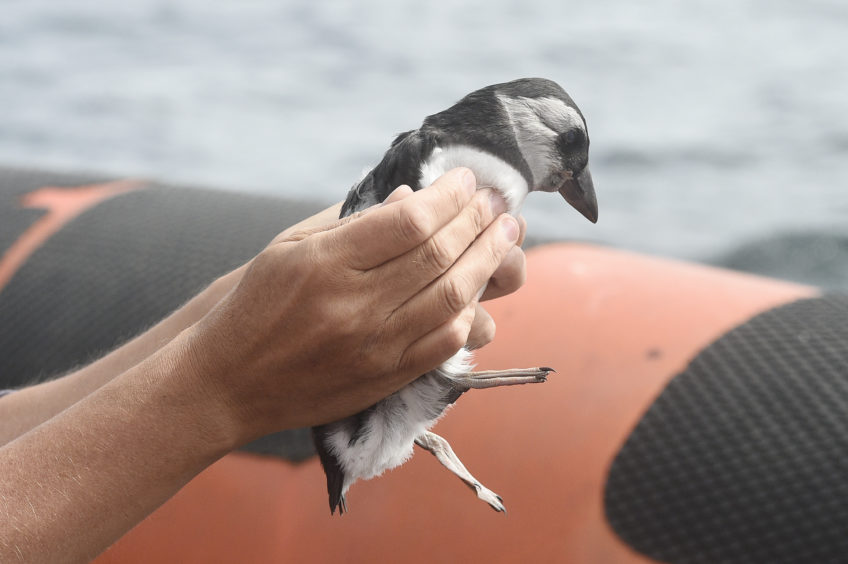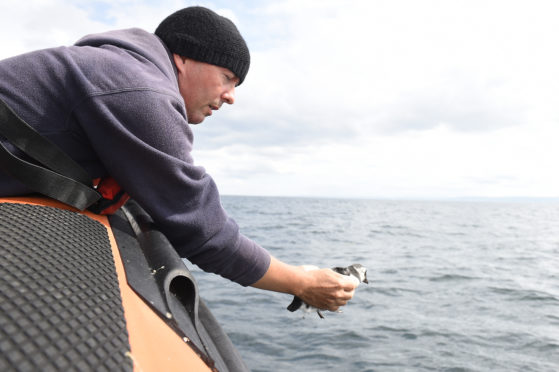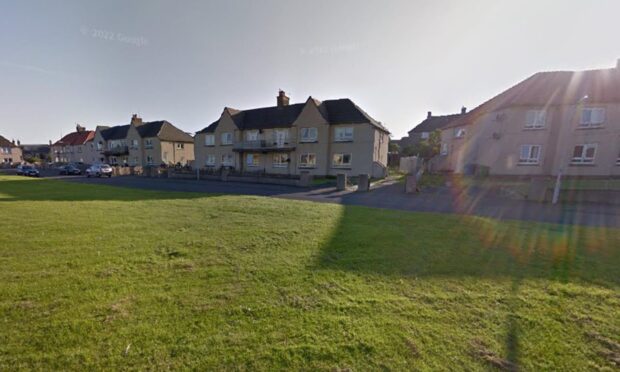A Scottish charity has called on visitors to Fife and the region’s residents to help strengthen its efforts to help the endangered puffin population.
Every summer, adventurous if albeit slightly confused pufflings have to be rescued from a range of tight spots along the Firth of Forth coastline, including underneath cars and plant pots and even recently from a portable toilet on the Isle of May.
Now the Scottish Seabird Centre wants people to look out for young puffins as they begin to leave their burrows on nearby islands and become disorientated by lights from the mainland.
The puffin is red-listed by the International Union for Conservation of Nature (IUCN) as it is globally vulnerable and declining in numbers.
With that in mind, James Leyden, Scottish Seabird Centre boat guide, said residents and visitors can play a vital role in helping this much-loved seabird by reporting any unusual sightings of the small grey chicks.
“Puffins and their pufflings are now leaving their burrows not only on the Isle of May and other islands in the Firth of Forth.,” he commented.
“After leaving their burrows some pufflings can become disorientated by lights from the mainland.
“Their first ever flight may see them flying into town and seeking somewhere dark to hide from predators often underneath cars and under plants in gardens.
“We are appealing for people to be extra vigilant over the next few weeks and, if they spot a puffling, to immediately alert the Scottish Seabird Centre on 01620 890202 or the Scottish SPCA on 03000 999 999.”
Mr Leyden added that the team from the Scottish SPCA or the Scottish Seabird Centre can come out to release the pufflings in safer areas.
“When we’re notified of their misadventures, we carefully collect the pufflings and take them out to sea and release them, well away from the islands and especially the predator gulls,” he added.
“They then typically swim off into the North Sea where they will live for the next three years.
“It is important to note that pufflings look completely different from their adult counterparts.
“People often don’t realise what they can see is a puffling.
“They are shades of grey, white and black; their smaller beaks don’t have the characteristic bright colours that the adults have in summer.”

There are around 2,600 apparently occupied puffin burrows on Craigleith and around 55,000 in total on islands in the Forth, with two adults and one puffling for each successful burrow nest.
The Scottish Seabird Centre leads a number of campaigns focussing on the conservation of seabirds and the marine environment including SOS Puffin, a campaign to remove an invasive plant called tree mallow.
This plant was preventing puffins from nesting and rearing their chicks on the nearby islands of Fidra and Craigleith, causing a significant population decline.
Over 1,200 volunteers have helped with this project and, thanks to their hard work, local puffin numbers are recovering.










